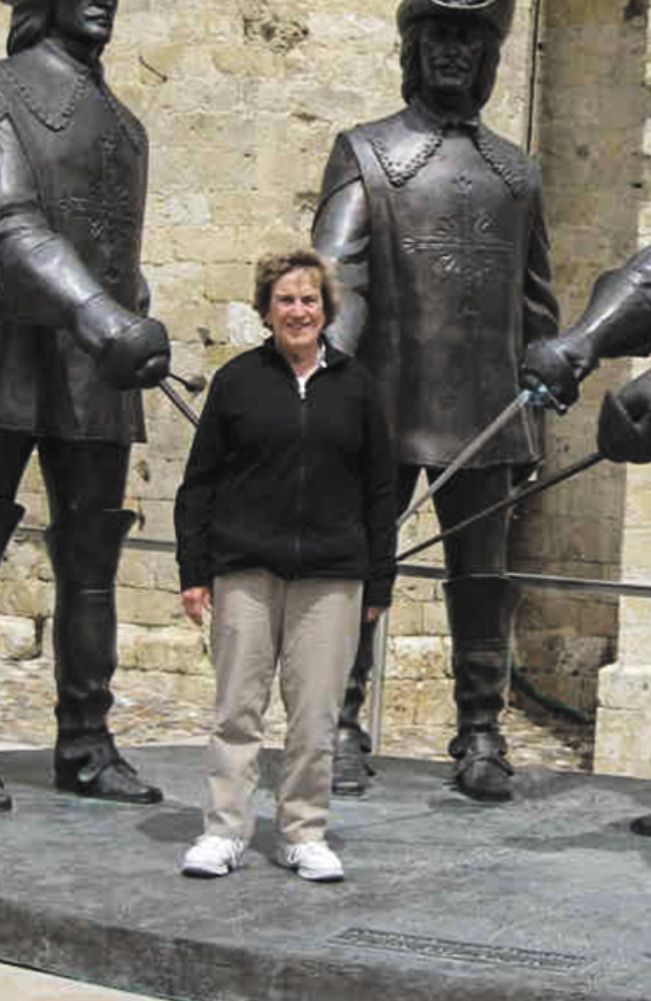Joan Feynman
DOI: 10.1063/PT.3.4684
Eminent geophysicist Joan Feynman died in Oxnard, California, on 22 July 2020 of a myocardial infarction.
Born in Queens, New York, on 30 March 1927, Joan graduated with a physics degree from Oberlin College in 1948. However, her education and scientific curiosity probably began much earlier, under the guidance and tutelage of her older brother, Richard. She would recount how her first job was as his 4¢-a-week paid assistant, in his sort-of magnetic field and electricity lab, where on occasions she would climb onto boxes to “pull the switch.” Her early inquisitiveness into how nature works remained with her throughout her long and distinguished career.

Joan Feynman
ALEXANDER RUZMAIKIN

For her PhD, conferred in 1957 from Syracuse University, Joan looked at the IR absorption of diamond-type crystals. After a short period as a homemaker, she started her professional career at Columbia University’s Lamont–Doherty Earth Observatory by investigating Earth’s magnetic field. That was the beginning of her research in geophysics, particularly in Earth–Sun relationships and climate change.
Joan’s contributions to those fields were numerous; some of her most important involved coronal mass ejections (CMEs) from the Sun, their propagation through the solar wind to Earth’s magnetosphere, and their effect on the formation of auroras. While working at NASA’s Ames Research Center in the early 1970s, she made the significant finding that during the acceleration of solar particles associated with solar flares, the amount of helium in the solar wind increases significantly. Back then, little was known about CMEs, and they weren’t easily detected. Now the helium enrichment serves as a method of identifying CMEs. Joan continued her CME research, including coauthoring papers on the clustering of fast CMEs, until her death.
On auroras, Joan’s major discovery was that the relative directions of Earth’s and interplanetary magnetic fields had to be southward pointing for an aurora to occur. She would tell the story of how in 2012, when she was invited to Sweden to give a talk on auroras, all the conditions were apparently right for one to occur. But when none did, she had to revise her talk to explain why! The reason: The Sun was quiet.
Joan joined NASA’s Jet Propulsion Laboratory (JPL) in California in 1985 after stints at the High Altitude Observatory in Colorado; NSF in Washington, DC; and the US Air Force Geophysics Laboratory in Massachusetts.
I first met Joan at JPL when I arrived to lead the Natural Space Environments Group. Its primary function was to provide space missions, such as Cassini, with estimates of the environments that the spacecraft would encounter, including the key one of radiation due to high-energy charged particles. In interplanetary space, the main radiation hazard is from solar high-energy protons, which emanate from the Sun during essentially random solar energetic particle events. The models used to predict the total radiation dose from those events were old and based on the concept of anomalously large events, which were thought to occur once every 100 years.
Joan developed a new model, derived from the latest set of spacecraft measurements, and showed that anomalously large events were, in fact, merely part of the overall event distribution and not that rare at all. Her model became the standard model, and it was used in the design of several missions, including Magellan. Although Magellan suffered from several operational problems, such as solar-array power loss and star-tracker interference, during the large particle events of October 1989, it survived and was extremely successful.
Joan left my group after a couple of years and moved to JPL’s space-physics group to continue with her first love, Sun–Earth interactions. She had a permanent job and the freedom to conduct her own research, and in 1999 she joined the elite ranks of JPL senior scientists. A year later she received NASA’s Exceptional Achievement Medal for her pioneering contribution to the study of solar causes of geomagnetic and climate disturbances.
In 1992 Joan married another solar scientist, Alexander Ruzmaikin, and they collaborated extensively on solar activity, climate change, and even anthropology. She was proud of the research they did to explain how the late origin of agricultural societies, a puzzle that had worried her from a young age, was caused by climate change.
The hallmarks of Joan’s work were meticulous attention to detail and analyzing data in ways that led to new revelations and discoveries. For Joan, it was imperative that research be fun, and she strived for that throughout her career.
More about the Authors
Stephen B. Gabriel. University of Southampton, Southampton, UK.
